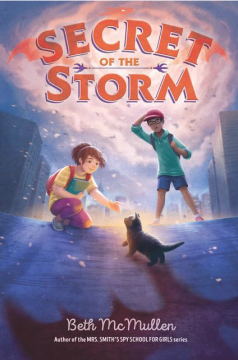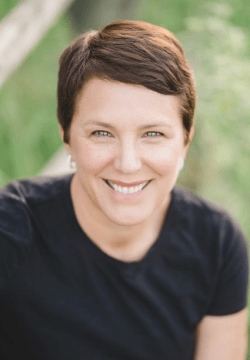When I saw the topic for this book, I was excited to read it. I recently began seeking out books on sustainability as it is a personal interest of mine. I expected that When the World Runs Dry would be solely about drought. I didn’t realize how little I knew about the many ways our water can become unusable.
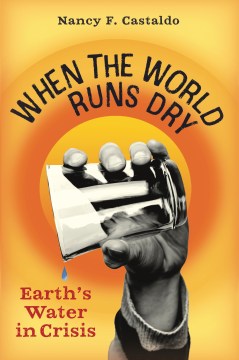
When the World Runs Dry touches on so many different water-related issues that have occurred throughout the United States and the world. It also shares personal stories of those affected and their efforts to help their community get back their clean water source. I got a chance to learn more with author Nancy F. Castaldo just in time for World Water Day, March 22.
About the Book
Hi Nancy! Thank you for sharing When the World Runs Dry with me. Can you give us a short summary about this nonfiction book?
Hello! Happy to be here to discuss WHEN THE WORLD RUNS DRY. Like me, and my readers, you’ve probably seen stories in the news about water quality and quantity. They seem to be everywhere. My latest book addresses those stories and provides readers with ways to help preserve and protect this precious natural resource. After all, WATER IS LIFE!
When did the come out?
The book hit bookstore shelves in January!
What is your personal connection to this topic?
Well, I need water to live, just like every other organism on our planet. I also was fortunate to have a mom who taught me that my voice mattered as she worked to keep our water supply healthy when I was a kid. We all should be concerned about keeping our water available and clean. Global water issues impact everyone.
About the Author
Tell us about you. Did you read a lot of nonfiction as a child?
I read everything – Nancy Drew mysteries, fables and folktales, and nonfiction. I can still picture my elementary school library’s nonfiction shelves. I loved poring over biographies about women. Marie Curie was a favorite. But even before I could read, I loved hearing my parents read nonfiction books and poetry to me.
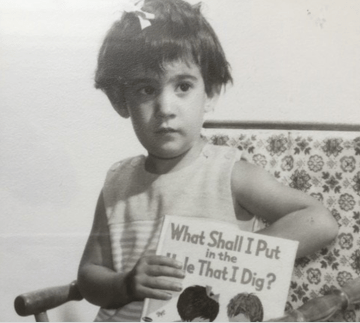
It’s always so fun to see authors as kids!
Who are some of your favorite authors?
On the adult side, I am greatly inspired by Rachel Carson. When I talk about kidlit, I love so many of the books by my nonfiction author friends, including Patricia Newman, Deborah Heiligman, and so many others. I also love reading the poetry of Jeannine Atkins, Margarita Engle, and Joyce Sidman.
You mentioned tagging along with your mom when she petitioned in the neighborhood. At the time, did you understand the significance?
My mom was also my Girl Scout leader. She was a huge force in my life and for the girls in our troop. Yes, I was old enough to understand. My mom also brought me with her when she served as a US census taker. These experiences opened my eyes to the world around me.
Research/Writing
Did you travel to the locations mentioned in your book for research?
I was fortunate to be able to visit most of them. You’ll see my photos throughout the book from Flint, Tucson, California, Venice, Colorado, Hoosick, and New Hampshire. Speaking firsthand with people in these communities was essential for me.
Did you write a proposal on this topic for submission? If not, how did it come to be?
Yes, all my nonfiction books begin with a proposal that includes fragments of my research.
Have you made any changes in your own life as a result of your research?
While I was already aware of how I could conserve water in my own home, researching this book did change my shopping behaviors. I strive to use less energy and less plastic. I shop less for clothes and pay attention to the bathing and cleaning products I flush down the drain. In addition, my interest and activism in environmental justice issues increased.
You are the author of many nature/nonfiction books for all ages. What is your favorite age to write for?
I can honestly say I don’t have a favorite age to write for. Each story dictates the genre and age. For me, story comes first.
Information On Water
I loved your analogy comparing straws in a milkshake to too many people trying to access clean water. Can you explain?
If you’ve watched the movie There Will Be Blood, you might remember hearing Daniel Day-Lewis using the straws-in-the-milkshake analogy to describe underground reserves of oil. Like oil, water reserves also run underground under communities and homes. I borrowed that analogy to describe the pipes leading from these groundwater supplies to our homes, business, and schools.
What are the easiest changes people can make in their life?
In the book, I’ve included many ways that we can help preserve and protect our water resources. A great first step is to find out about your own water supply. Where does your water originate? Is it treated in any way? What might impact it? Knowing more about your own water will help determine the best way to protect it.
I hope that teachers and readers will find lots of ways to help in the last chapter of WHEN THE WORLD RUNS DRY. In addition, the Resources section will then point them to books to read, hashtags to follow, and videos to watch to provide jumping off points to more learning. I hope teachers will take a look.
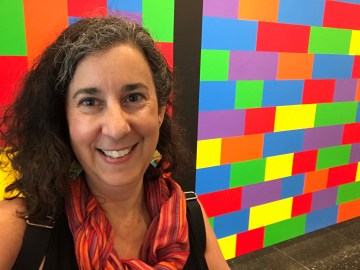
Information for Teachers
I hadn’t heard about the Discovery Education 3M Young Scientist Challenge. Can you tell us a bit more about this and how teachers can involve their students?
It’s a fantastic opportunity for curious, budding scientists and inventors. I was so impressed with the winning water-based inventions and was happy to include a couple in WHEN THE WORLD RUNS DRY. Teachers can find out more about it at https://www.youngscientistlab.com/challenge
Are you doing school visits related to this book? Tell us more!
Yes, I have been doing virtual visits throughout the United States for middle school and high school grades. I’ve loved hearing so many insightful questions from my readers.
Do you have a curriculum guide or discussion questions posted online?
Teachers can explore my recent LitLinks post on Patricia Newman’s blog to find an activity about drinking water for their students. https://www.patriciamnewman.com/litlinks-will-our-world-run-dry-easy-ways-to-help-students-raise-their-voices-about-water/.
How can we learn more about you?
Readers and educators can learn about me and my books from my website https://nancycastaldo.com, Instagram at https://www.instagram.com/naturespeak/ or follow me on Twitter @NCastaldoAuthor.
Thank you for your time. This is such an important topic, and you did a great job breaking it down for your readers.
Thank you! One of my favorite quotes came from an Audubon magazine review: WHEN THE WORLD RUNS DRY is the book to read “if you want to go from depressed to fired-up and ready for action.” I’m hoping my readers feel the same way.
Nancy F. Castaldo will be giving a copy of When the World Runs Dry to a lucky reader. Enter the giveaway below for a chance to win a copy. (U.S. addresses only)
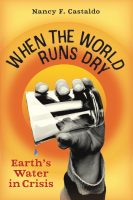

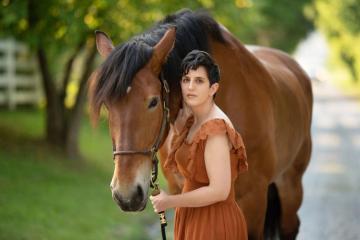 Today, on the Mixed-Up Files of Middle Grade Authors we welcome Michelle Jabès Corpora, who is a writer, editor, community organizer and martial artist. In addition to working in the publishing industry for fifteen years as an editor, she has ghostwritten five novels in a long-running middle grade mystery series. She is the author of The Dust Bowl (Penguin Workshop) and The Fog of War: Martha Gellhorn at the D-Day Landings(Pushkin Press).
Today, on the Mixed-Up Files of Middle Grade Authors we welcome Michelle Jabès Corpora, who is a writer, editor, community organizer and martial artist. In addition to working in the publishing industry for fifteen years as an editor, she has ghostwritten five novels in a long-running middle grade mystery series. She is the author of The Dust Bowl (Penguin Workshop) and The Fog of War: Martha Gellhorn at the D-Day Landings(Pushkin Press).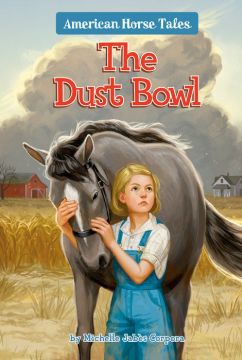 Your main character Ginny loves her horse Thimble and would do anything to keep Pa from selling him. I could really feel Ginny’s affection for her horse. What is your relationship to horses and how did you go about creating Thimble as a character?
Your main character Ginny loves her horse Thimble and would do anything to keep Pa from selling him. I could really feel Ginny’s affection for her horse. What is your relationship to horses and how did you go about creating Thimble as a character?